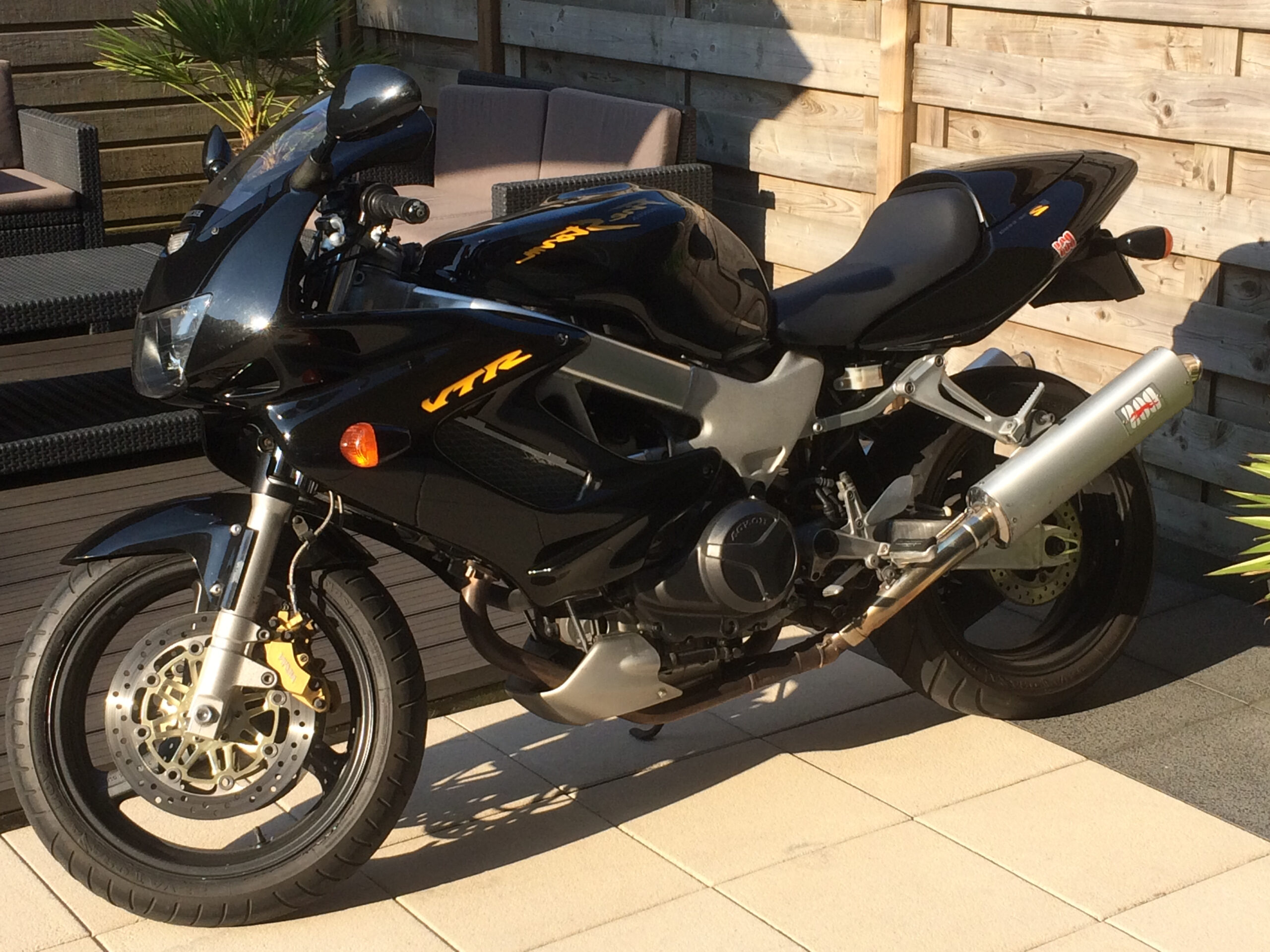Honda VTR1000F – The Return of the V-Twin with Innovative Flair
When Honda introduced the VTR1000F in 1997, the company ventured into new territory. This sportbike, powered by a 90-degree V-twin engine, marked a significant departure from Honda’s traditional inline-four setups. Known as the “Firestorm” in Europe and the “Superhawk” in the U.S., the VTR1000F brought with it a series of groundbreaking technical innovations that were uncommon for Japanese sportbikes at the time.
At the heart of the bike was an all-new V-twin engine that was not only powerful but also ingeniously engineered. One of the standout design elements was a semi-pivotless frame, where the engine acted as a stressed member, with the swingarm bolted directly to it. This design reduced weight and increased rigidity, enhancing the bike’s handling characteristics. Another distinctive feature was the use of side-mounted radiators — an unusual choice that saved space and helped lower the center of gravity.
Technically, the VTR1000F was full of remarkable details. Honda fitted it with massive 48 mm carburetors — the largest ever on a production motorcycle — and huge 38 mm intake valves, a record for the brand at the time. Internally, the engine also featured forged connecting rods secured with bolts instead of traditional nuts, and a uniquely cast engine block formed from a single piece.
To counter the notoriously choppy throttle response typical of large V-twins, Honda used different camshaft profiles and intake manifold dimensions for the front and rear cylinders. The result was a smooth and predictable power delivery that won praise from motorcycle journalists around the world.
Model Evolution
In 1999, the VTR1000F received a subtle update with new silver-colored wheels. More substantial changes arrived in the 2001 model year. The fuel tank was increased from 16 to 19 liters (5.02 US gallons), significantly improving range — a welcome change for touring riders. The riding position became more relaxed thanks to slightly raised and less aggressively angled clip-on handlebars. The dashboard was also updated, featuring an LCD display with fuel level, engine temperature, dual trip meters, odometer, and a clock.
Suspension improvements were made internally to the front forks for better damping, while new black wheels and more compact turn signals gave the bike a fresher, more modern look. Honda’s HISS (Honda Ignition Security System) anti-theft immobilizer also became standard equipment.
Interestingly, the U.S.-market Superhawk never received the larger fuel tank and retained the original 16-liter (4.2 US gallon) version — a frequent point of criticism from American riders who wanted better touring capability.
An Underrated Classic
Although the VTR1000F never achieved the cult status of models like the Ducati 996 or Suzuki TL1000S, it’s now often seen as a robust, reliable, and versatile V-twin with a unique character. Its blend of raw V-twin power, Japanese engineering reliability, and forward-thinking design makes it a standout machine in Honda’s motorcycle legacy.


